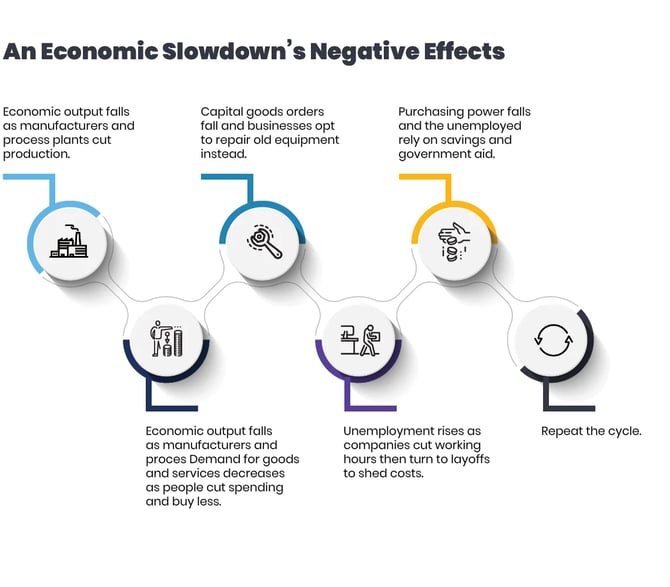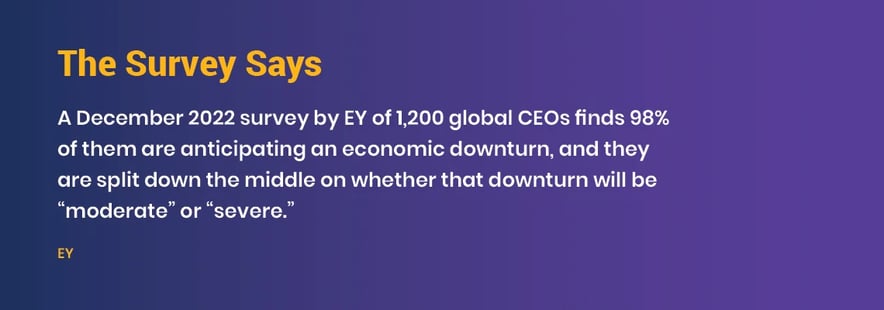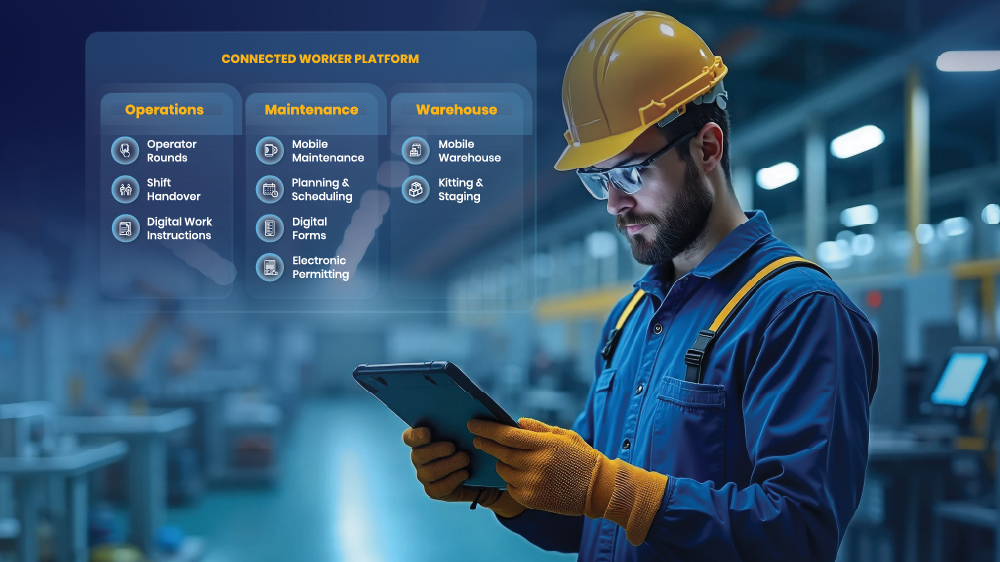Rough Economic Waters Ahead? Navigate Them Using a Connected Worker Solution

If you read or watch the mass media, you’re seeing or hearing a lot of talk and speculation about the economy. There’s a feeling that we might be headed for some tough sailing in the months ahead. You'll want to be sure your operations are in shipshape to weather any negative impact. One way to do that is to digitally transform your maintenance and warehouse management for maximum efficiency with a connected worker platform.
What Is A Connected Worker?
You may have heard the term "connected worker" thrown around a lot in recent years, but aren't exactly sure what it means. That's OK. A connected worker isn't some trendy management phrase. On the contrary, it's a real, tangible business strategy.
You can use a connected worker strategy to increase frontline worker productivity, boost return on investment, satisfy customers, and become more cost-efficient. It's also a new approach to how people conduct their daily tasks at work.
Gartner says, "The Connected Worker is an online employee that has the ability to work from anywhere, anytime, and using any device. As a result, there has been a dramatic change in the way employees perform their jobs."
In the field or the shop, connected workers using mobile devices such as smartphones, scanners, tablets, and wearables to conduct real-time:
- Maintenance work orders
- Inspections
- Operator rounds
- Digital work instructions
- Equipment checks, etc.
In the warehouse, workers use these same devices to perform real-time:
- Goods movements
- Returns
- Putaway
- Picking and packing
- Cycle counting and inventory
Advantages of an Integrated Connected Worker Solution
A connected worker solution or platform is more than a mobile application. Lots of vendors offer maintenance or warehouse management mobile applications. Most of them work fine and can help a company's maintenance or warehouse achieve positive results.
However, numerous organizations have different mobile application vendors within a plant or factory. The maintenance department utilizes one product while the warehouse subscribes to the services of another. When these groups seek to collaborate during a turnaround or shutdown, the differing mobile applications can't connect. Cross-departmental cooperation is limited, tasks are slower, and efficiency is more difficult.
A connected worker solution integrates the mobile applications of two or more operational groups to provide a single, unified source of accurate, real-time data that delivers end-to-end visibility across departments and processes.
Simply put, with a connected worker platform, maintenance, and the warehouse can digitally communicate and collaborate to ensure spare parts are ready when needed for an important project. A connected worker platform also delivers valuable information that supports knowledgeable decision making. Finally, such a platform has dashboards to facilitate specific actions.
Connected worker platforms offer users:
- Greater operational visibility throughout an enterprise
- Insight into the potential cause of a problem and its effects
- A way to assign resources and check spare part availability
- Improved collaboration to undertake recommended actions in a timely fashion
What’s All This Have to Do With Potentially Rougher Economic Waters Ahead?
Economic slowdowns and downturns often force companies to do more with less. This naturally leads them to rethink the ways they operate. That rethinking often comes with a lot of pain when put into practice. Connected worker platforms can help organizations become more efficient, better use resources (labor and material), take quicker action, and reduce costs. These items become increasingly vital during an economic slump when every dollar must be accounted for and every budget line item comes under greater scrutiny.

Plant or factory maintenance managers face five key performance indicators (KPIs) when evaluating how well their departments are doing:
- Unscheduled downtime
- Reactive maintenance work hours
- Maintenance costs
- Mean time between failure
- Work order cycle time
Warehouse managers have their own KPIs, including:
- Receiving efficiency
- Putaway efficiency
- Inventory accuracy
- Order cycle time
- Order accuracy rate
- Picking accuracy
An integrated connected worker platform offers a way to reach and exceed these KPIs. Should an economic slump occur, plants or factories using such a solution will be in a much better position to ride the waves. They’ll suffer less pain and disruption than departments at plants utilizing standalone mobile applications or that employ a paper-based system.
Learn More in These Informative Videos
Innovapptive is a pioneer in the connected worker platform arena. Watch our 3-minute introductory video to discover the agility and flexibility our solution can deliver to you and your frontline workforce. If you have more time, take a 7-minute product tour that shows the many ways such a system can help you become more efficient, whether an economic downturn happens or not.
Have Questions? Want a Demo?
Our experts are standing by to offer a free demonstration of our solution, answer your questions and understand your unique needs. Click here or give us a call today at 844-464-6668.

See It In Action
Schedule a personalized demo to see how our solutions can help your business thrive.
- 29-09-2025
Your Ultimate Guide to Connected Worker
In the rapidly evolving industrial landscape, maximizing plant efficiency and ensuring optimal...
- 20-08-2025
Building the future of Industrial Operations with Innovapptive and AWS
Most manufacturers have already gone digital. Yet business outcomes haven’t moved in step. Many...
- 22-04-2025
The $3.6B Unlock: Solving the Chemical Industry’s Labor Crisis and EBITDA Pressure in One Move
“Constraints don’t slow innovation—they force it.”



